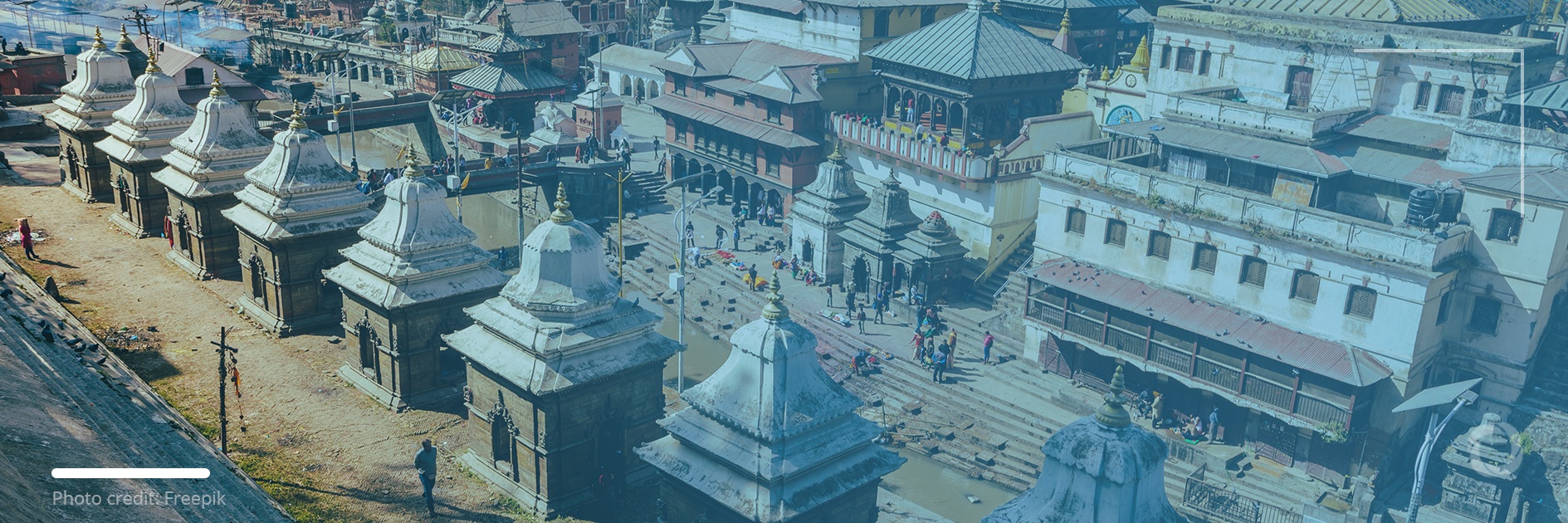After five years of negotiations and political horse trading, the government of Nepal has finally ratified the American government’s offer of US$500 million in grant funding from the Millennium Challenge Corporation (MCC).
Initially proposed in September 2017, the MCC grant is aimed at modernizing Nepal’s transport network and energy infrastructure but intense lobbying, street protests, and domestic political turmoil saw full ratification of the agreement being delayed for nearly five years.
The MCC is regarded as an independent agency of the U.S. government that strives to reduce global poverty through development aid that promotes economic growth and good governance as well as eliminating corruption. The MCC was created in 2004 during the administration of American President George Bush.
 Nepal
Nepal
Nepal is a small country of 29 million people sandwiched between the two most populous neighbors on the planet: India and China. Home to Mount Everest and other towering peaks of the Himalayan mountains, Nepal has had a bumpy road to democracy since gaining full independence from the British at the end of World War II.
Traditionally, since unifying as a single kingdom in the mid-18th century, Nepal has been a monarchy but a Maoist insurgency led to a civil war that began in 1996 and lasted until 2006. Amidst the backdrop of war, a massacre in the palace by a member of the royal family in 2001 led to a weakening of the monarchy. Negotiations with the Maoists (the Communist Party) eventually led to a peaceful democratic revolution in 2006, the abdication of the monarchy, and the full establishment of a federal republic in 2008.
Since that time, various political coalitions have struggled to maintain power in Nepal although there have been several peaceful transitions between governments. Currently, a fragile coalition headed up by Prime Minister Sher Bahadur Deuba that includes the Nepali Congress Party, the PSPN (Socialist) party, and two factions of the Communist Party is temporarily in power until elections are held later this year.
 Relations with China
Relations with China
Home to more than a hundred different ethnicities and clans, the majority of people in Nepal are practitioners of the Hindu faith and India remains Nepal’s biggest economic partner.
However, Nepal’s northern neighbor, China, stepped in to take a bigger role in 2018 when Khadga Prasad (“KP”) Sharma Oli was elected for the second time as Prime Minister, replacing Sher Bahadur Deuba. Despite opposition from Nepal’s own Communist Party, Oli was widely seen as Beijing’s man after he signed up his country to participate in China’s Belt and Road Initiative.
The pivot to China was supported by many Nepalis, partly because it offered assurances of greater independence from India. In 2019, Chinese President Xi Jinping made a formal state visit to Nepal, the first visit by a Chinese leader in 23 years, during which he announced that his country would provide US$492 million in development aid to Nepal over the following two years.
He also announced what China calls the “Three Supports” for Nepal which include greater bilateral ties, support for Nepal to pursue a course of geopolitical independence (particularly from India and the United States), and the Belt and Road Initiative.
In 2020, China stepped in to provide medical assistance to Nepal during the pandemic including ventilators, oxygen supplies, masks, and vaccines at a time when the United States and India were slower to deliver medical aid.
In 2021, China’s development agency, the China International Development Cooperation Agency (CIDCA), signed a number of agreements to begin development projects in 15 northern districts of Nepal that border the Autonomous Region of Tibet in China.
“Chinese investment in the north of Nepal to build highways, health facilities, irrigation systems, and schools might not be significant in terms of the amount of dollars, but it’s a proactive move to prevent India and the West from getting close to the Tibet border,” said Pramod Jaisawal, an expert on China.
In July 2021, Prime Minister KP Oli was ousted after losing a vote of confidence and former PM Sher Bahadur Deuba returned for his fifth term as Prime Minister after cobbling together a coalition between the central and left wings of the Communist Party. As required by the Nepali Constitution, PM Deuba won a vote of confidence a few weeks later, guaranteeing that he will remain in office until the general elections are held later this year.
 Relations with the U.S.
Relations with the U.S.
The United States has maintained diplomatic ties with Nepal since 1947 but did not have much of a presence in the country until the latter half of the 20th century.
The U.S. Agency for International Development (USAID) has spent a total of US$791 million in Nepal since 1951, the bulk of which occurred in the decade after World War II when the US launched its Point Four Program. In more recent years, USAID has provided key development assistance to Nepal following a series of devastating earthquakes in 2015 which included the lifting of tariffs on Nepali goods such as scarves, rugs, carpets, blankets, and handbags.
The United States is also one of the largest sources of tourists visiting Nepal, sending approximately 100,000 visitors from America every year.
A last-minute push
The 2017 MCC grant was seen as a game-changer by many in Washington seeking to gain greater influence in the region. However, resistance from PM KP Oli as well as some factions of the Communist Party led to the MCC deal being put on hold indefinitely with some warning that it would infringe on Nepal’s sovereignty.
What seems to have broken the five-year-long stalemate was the personal intervention of Donald Lu, the U.S. Assistant Secretary of State for South and Central Affairs, who assumed the post in September 2021. A week after taking office, Mr. Lu wrote to PM Deuba and Pushpa Kamal Dahal, the Chairman of the Communist Party of Nepal (Maoist Centre), to inform them that Nepal had until February 28th, 2022 to ratify the deal.
As the deadline approached, earlier this year Mr. Lu telephoned PM Deuba, former PM KP Oli, and Chairman Pushpa Kamal Dahal to warn them that the United States would “review” its relations with Nepal if the MCC grant was not accepted by that deadline. No formal details of the conversation have ever been published, but many saw Lu’s phone call as a clear warning that Washington would not brook any further delays in accepting its money.
The day after Lu’s phone call, the Nepali Parliament approved the MCC grant agreement by voice vote and on March 1st the MCC agreement was formally ratified despite large protests in Kathmandu. Prior to the vote, the U.S. Embassy had said that the decision on whether or not to ratify the MCC agreement was “Nepal’s to make” as the grant had been “requested by the Nepali government.”
Following the ratification of the MCC agreement, China’s foreign ministry spokeswoman, Hua Chunying, warned Nepal that accepting US aid would come with too many strings attached.
“It’s like the old Nepali saying, that the meat might look good, but you’ll find it really difficult to chew.” Hua also said, “How could a gift [the MCC grant] be implemented via an ultimatum? Is it really a gift, or is it a Pandora’s box?”
Two weeks later, Chinese Foreign Minister Wang Yi flew to Kathmandu for a state visit when he assured Nepal that China would continue to provide development assistance as well as work with Nepal to increase cross-border economic traffic (which virtually ceased during the pandemic), reduce tariffs and provide more scholarships for Nepali students to study at Chinese universities. Minister Wang Yi also spoke about a proposed China-Nepal cross-border railway project.
The new MCC agreement is now valued at US$630 million as the Nepali government has pledged to invest US$130 million to modernize its transport infrastructure and electrical network on top of the US$500 million MCC grant from the United States.


